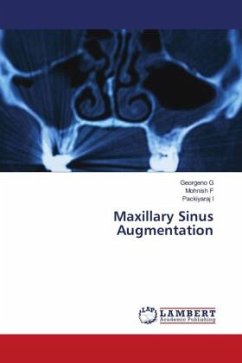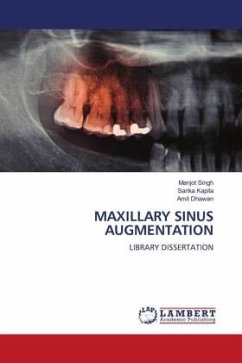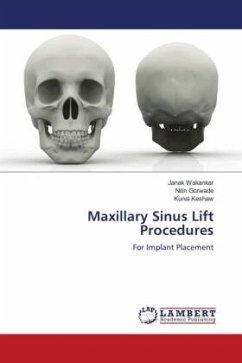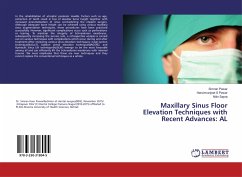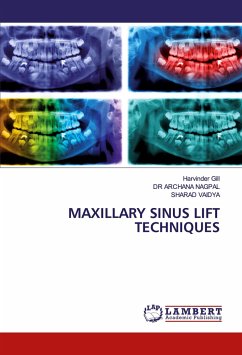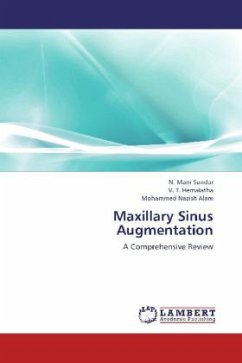
Maxillary Sinus Augmentation
A Comprehensive Review
Versandkostenfrei!
Versandfertig in 6-10 Tagen
38,99 €
inkl. MwSt.

PAYBACK Punkte
19 °P sammeln!
Maxillary teeth are among the teeth with the highest incidence of periodontal bone loss and tooth loss. Following the removal of posterior dentition, a combination of horizontal and vertical alveolar bone resorption with maxillary sinus expansion frequently results in lack of bone. This results in the wide spread treatment need to restore masticatory function in the posterior maxilla.Since the introduction of sinus graft technique by TANTUM in 19863; BOYNE AND JAMES in 19804; various types of graft materials, implants and procedural modifications have been proposed to improve the efficacy of t...
Maxillary teeth are among the teeth with the highest incidence of periodontal bone loss and tooth loss. Following the removal of posterior dentition, a combination of horizontal and vertical alveolar bone resorption with maxillary sinus expansion frequently results in lack of bone. This results in the wide spread treatment need to restore masticatory function in the posterior maxilla.Since the introduction of sinus graft technique by TANTUM in 19863; BOYNE AND JAMES in 19804; various types of graft materials, implants and procedural modifications have been proposed to improve the efficacy of the therapy. Maxillary SINUS grafting has become a routine treatment over the last ten years. It allows the placement of dental implants using simultaneous or staged procedures in sites in posterior maxilla that were previously considered unsuitable for implant placement because of insufficient bone volume The procedure is referred to as one stage when the implants and graft are placed simultaneously; while in two stage procedure, implantplacement is delayed for several months to allow for graft maturation.




